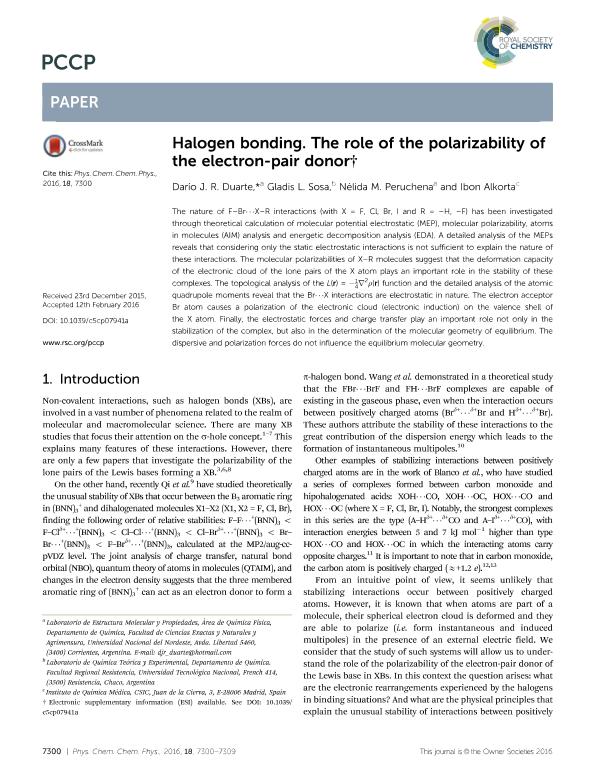Artículo
Halogen bonding: the role of the polarizability of the electron-pair donor
Fecha de publicación:
02/2016
Editorial:
Royal Society of Chemistry
Revista:
Physical Chemistry Chemical Physics
ISSN:
1463-9076
Idioma:
Inglés
Tipo de recurso:
Artículo publicado
Clasificación temática:
Resumen
The nature of F-Br⋯X-R interactions (with X = F, Cl, Br, I and R = -H, -F) has been investigated through theoretical calculation of molecular potential electrostatic (MEP), molecular polarizability, atoms in molecules (AIM) analysis and energetic decomposition analysis (EDA). A detailed analysis of the MEPs reveals that considering only the static electrostatic interactions is not sufficient to explain the nature of these interactions. The molecular polarizabilities of X-R molecules suggest that the deformation capacity of the electronic cloud of the lone pairs of the X atom plays an important role in the stability of these complexes. The topological analysis of the L(r) = -∇2ρ(r) function and the detailed analysis of the atomic quadrupole moments reveal that the Br⋯X interactions are electrostatic in nature. The electron acceptor Br atom causes a polarization of the electronic cloud (electronic induction) on the valence shell of the X atom. Finally, the electrostatic forces and charge transfer play an important role not only in the stabilization of the complex, but also in the determination of the molecular geometry of equilibrium. The dispersive and polarization forces do not influence the equilibrium molecular geometry.
Palabras clave:
Halogen Bond
,
Qtaim
,
Laplacian
,
Mep
Archivos asociados
Licencia
Identificadores
Colecciones
Articulos(CCT - NORDESTE)
Articulos de CTRO.CIENTIFICO TECNOL.CONICET - NORDESTE
Articulos de CTRO.CIENTIFICO TECNOL.CONICET - NORDESTE
Citación
Duarte, Darío Jorge Roberto; Sosa, Gladis Laura; Peruchena, Nelida Maria; Alkorta, Ibon; Halogen bonding: the role of the polarizability of the electron-pair donor; Royal Society of Chemistry; Physical Chemistry Chemical Physics; 18; 10; 2-2016; 7300-7309
Compartir
Altmétricas




